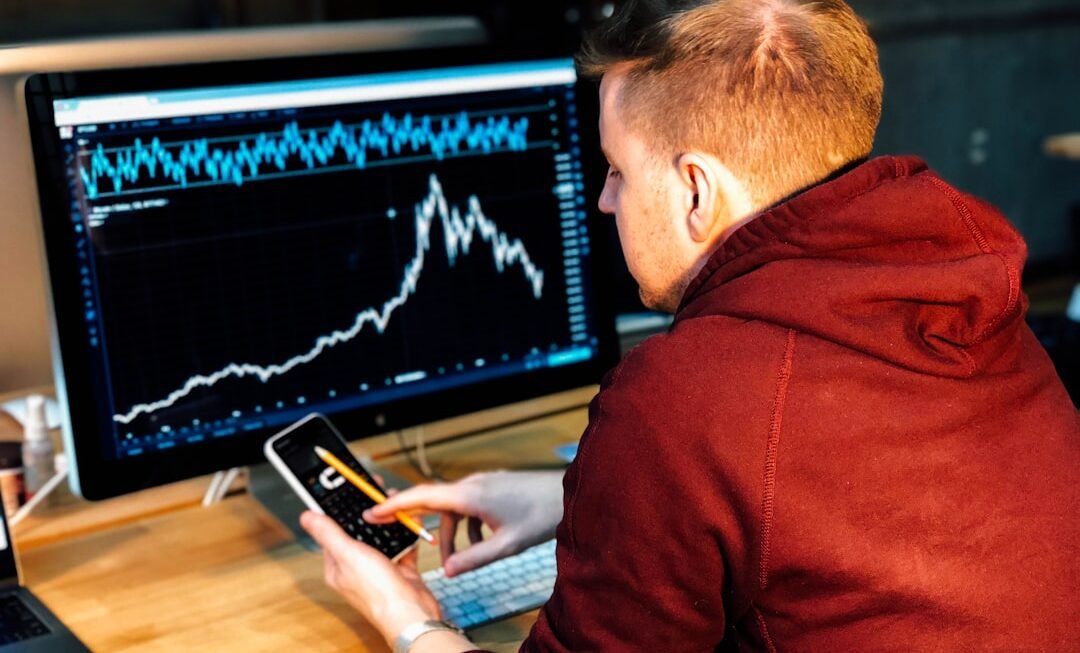High-frequency trading (HFT) represents a sophisticated and rapidly evolving segment of the financial markets, characterized by the execution of a large number of orders at extremely high speeds. This trading strategy leverages advanced algorithms and technology to capitalize on minute price discrepancies that exist for fractions of a second. The advent of artificial intelligence (AI) has further transformed HFT, enabling traders to analyze vast datasets and execute trades with unprecedented precision.
AI’s ability to learn from historical data and adapt to changing market conditions has made it an invaluable tool in the arsenal of modern traders. The integration of AI into HFT is not merely a trend; it signifies a paradigm shift in how trading strategies are developed and executed. Traditional trading methods, which often relied on human intuition and experience, are increasingly being supplanted by algorithmic approaches that can process information at lightning speed.
As financial markets become more complex and interconnected, the role of AI in HFT is expected to grow, raising important questions about its implications for market dynamics, regulatory frameworks, and ethical considerations.
Benefits of Using AI in High-Frequency Trading
One of the most significant advantages of employing AI in high-frequency trading is its capacity for real-time data analysis. AI algorithms can sift through enormous volumes of market data, news articles, social media sentiment, and economic indicators in mere milliseconds. This capability allows traders to identify patterns and trends that may not be immediately apparent to human analysts.
For instance, an AI system can analyze the impact of geopolitical events on stock prices by correlating historical data with current market movements, enabling traders to make informed decisions based on predictive analytics. Moreover, AI enhances the ability to optimize trading strategies continuously. Machine learning models can adapt to new information and refine their algorithms over time, improving their predictive accuracy.
This adaptability is crucial in the fast-paced world of HFT, where market conditions can change rapidly. By utilizing reinforcement learning techniques, AI systems can learn from past trades, adjusting their strategies to maximize profitability while minimizing risk exposure. This dynamic approach to trading not only increases efficiency but also provides a competitive edge in a crowded marketplace.
Risks of Using AI in High-Frequency Trading
Despite the numerous benefits that AI brings to high-frequency trading, it is not without its risks. One of the primary concerns is the potential for algorithmic failures or “flash crashes.” These incidents occur when a malfunctioning algorithm triggers a rapid sell-off or buy-in, leading to extreme volatility in the markets. For example, the infamous Flash Crash of May 6, 2010, saw the Dow Jones Industrial Average plummet nearly 1,000 points within minutes due to automated trading systems reacting to market conditions in an uncoordinated manner.
Such events highlight the inherent risks associated with relying on algorithms that may not fully account for all market variables. Another significant risk is the potential for overfitting in machine learning models. Overfitting occurs when an algorithm is trained too closely on historical data, making it less effective at predicting future market movements.
In HFT, where conditions can change rapidly, an overfitted model may fail to adapt to new trends or anomalies, resulting in substantial financial losses. Additionally, the reliance on AI can lead to a lack of human oversight, as traders may become overly dependent on automated systems without fully understanding their underlying mechanics.
Improved Speed and Efficiency
The hallmark of high-frequency trading is its unparalleled speed, and AI significantly enhances this aspect. Algorithms powered by AI can execute trades in microseconds, far surpassing human capabilities. This speed allows traders to capitalize on fleeting opportunities that may arise due to market inefficiencies or sudden price movements.
For instance, if an AI system detects a price discrepancy between two correlated assets, it can execute trades almost instantaneously to exploit that difference before it disappears. Efficiency is another critical benefit derived from AI integration in HFT. Automated systems can manage multiple trades simultaneously across various markets and asset classes without fatigue or distraction.
This level of efficiency not only increases the volume of trades executed but also reduces transaction costs associated with manual trading processes. Furthermore, AI can optimize order execution strategies by determining the best times and methods for placing trades, thereby minimizing market impact and slippage.
Enhanced Market Analysis and Prediction
AI’s ability to analyze vast datasets extends beyond mere speed; it also enhances the depth and accuracy of market analysis. Traditional analytical methods often rely on historical price data and fundamental indicators, but AI can incorporate a broader range of variables into its models. For example, natural language processing (NLP) techniques enable AI systems to analyze news articles and social media posts for sentiment analysis, providing insights into market psychology that traditional methods might overlook.
Moreover, AI’s predictive capabilities are continually improving as machine learning techniques evolve. By employing advanced algorithms such as neural networks or ensemble methods, traders can develop models that not only forecast price movements but also assess the likelihood of various market scenarios. This predictive power allows traders to make more informed decisions regarding entry and exit points, risk management strategies, and portfolio allocation.
Reduced Human Error
Human error has long been a significant factor in trading losses, whether due to miscalculations, emotional decision-making, or simple oversight. The integration of AI into high-frequency trading mitigates these risks by automating processes that were once prone to human fallibility. Algorithms operate based on predefined rules and data inputs, eliminating the potential for emotional biases that can cloud judgment during volatile market conditions.
Furthermore, AI systems can continuously monitor market conditions and execute trades based on real-time data without the delays associated with human decision-making. This capability ensures that trades are executed at optimal prices and times, reducing the likelihood of missed opportunities or costly mistakes. For instance, an AI-driven trading system can automatically adjust its strategy in response to sudden market shifts, ensuring that it remains aligned with prevailing conditions while minimizing exposure to adverse movements.
Potential for Market Manipulation
While AI offers numerous advantages in high-frequency trading, it also raises concerns about potential market manipulation. The speed at which algorithms operate can be exploited by malicious actors seeking to manipulate prices for their gain. Techniques such as “quote stuffing,” where large volumes of orders are placed and then canceled almost instantaneously, can create artificial volatility and mislead other traders about market sentiment.
Moreover, the opacity of many AI-driven trading strategies makes it challenging for regulators to monitor and detect manipulative practices effectively. As algorithms become more complex and proprietary, understanding their decision-making processes becomes increasingly difficult. This lack of transparency poses significant challenges for regulatory bodies tasked with ensuring fair market practices and protecting investors from fraudulent activities.
Data Security and Privacy Concerns
The reliance on vast amounts of data for training AI models introduces significant data security and privacy concerns within high-frequency trading environments. Financial institutions must handle sensitive information responsibly while ensuring compliance with regulations such as the General Data Protection Regulation (GDPR) in Europe or the California Consumer Privacy Act (CCPA) in the United States. Breaches or misuse of data can lead not only to financial losses but also reputational damage that can undermine investor trust.
Additionally, as AI systems become more integrated into trading operations, they may become targets for cyberattacks aimed at compromising proprietary algorithms or stealing sensitive market data. The potential consequences of such breaches could be catastrophic, leading to significant financial losses or even destabilizing entire markets. Therefore, robust cybersecurity measures must be implemented alongside AI technologies to safeguard against these threats.
Regulatory and Ethical Considerations
The rapid evolution of AI in high-frequency trading has outpaced existing regulatory frameworks designed to govern financial markets. Regulators face the challenge of balancing innovation with investor protection while ensuring that markets remain fair and transparent. As AI-driven trading strategies become more prevalent, there is a pressing need for updated regulations that address the unique risks associated with algorithmic trading.
Ethical considerations also come into play as firms leverage AI technologies for competitive advantage. Questions arise regarding fairness in access to data and technology among different market participants. Large financial institutions with substantial resources may have an inherent advantage over smaller firms or retail investors who lack access to similar tools or information.
This disparity raises concerns about equity in the markets and whether regulatory measures should be implemented to level the playing field.
Impact on Market Stability
The increasing prevalence of high-frequency trading powered by AI has implications for overall market stability. While proponents argue that HFT contributes to liquidity and efficient price discovery, critics contend that it can exacerbate volatility during periods of market stress. The rapid execution of trades based on algorithmic signals can lead to cascading sell-offs or buy-ins that destabilize markets.
Moreover, the interconnectedness of HFT firms means that a failure or malfunction in one algorithm could trigger a chain reaction affecting multiple assets or markets simultaneously. This systemic risk poses challenges for regulators seeking to maintain orderly market conditions while fostering innovation within the financial sector. As such, ongoing research into the effects of HFT on market stability is essential for developing effective regulatory responses.
Conclusion and Future Outlook for AI in High-Frequency Trading
The future outlook for artificial intelligence in high-frequency trading is both promising and complex. As technology continues to advance, we can expect further innovations that enhance trading strategies and improve efficiency across financial markets. However, this evolution will necessitate ongoing dialogue among stakeholders—including traders, regulators, and technologists—to address emerging risks and ethical considerations.
As firms increasingly adopt AI-driven approaches to HFT, there will be a growing emphasis on developing robust regulatory frameworks that ensure fair practices while fostering innovation. The challenge will be finding a balance between harnessing the benefits of AI technology and mitigating its potential risks—an endeavor that will require collaboration across various sectors within the financial industry. Ultimately, as we navigate this rapidly changing landscape, the role of AI in high-frequency trading will continue to shape the future of finance in profound ways.
FAQs
What is high-frequency trading (HFT)?
High-frequency trading (HFT) is a type of trading that uses powerful computers to transact a large number of orders at extremely high speeds. This allows traders to exploit small price discrepancies and execute trades in fractions of a second.
What are the benefits of using AI in high-frequency trading?
Using AI in high-frequency trading can provide several benefits, including improved speed and efficiency in executing trades, the ability to analyze large volumes of data quickly, and the potential for identifying profitable trading opportunities that may not be apparent to human traders.
What are the risks of using AI in high-frequency trading?
Some of the risks of using AI in high-frequency trading include the potential for algorithmic errors leading to significant financial losses, the possibility of market manipulation, and concerns about the lack of transparency in AI-driven trading strategies. Additionally, there are ethical considerations surrounding the use of AI in financial markets.
How does AI impact market stability in high-frequency trading?
AI can impact market stability in high-frequency trading by increasing the speed and volume of trading activity, which can contribute to market volatility and potential disruptions. Additionally, AI-driven trading strategies may amplify market movements and contribute to flash crashes or other sudden market events.
What are some regulatory considerations for AI in high-frequency trading?
Regulatory considerations for AI in high-frequency trading include the need for oversight and monitoring of AI-driven trading strategies to ensure compliance with market regulations and to mitigate potential risks to market stability. Regulators are also exploring the development of guidelines and standards for the use of AI in financial markets.












